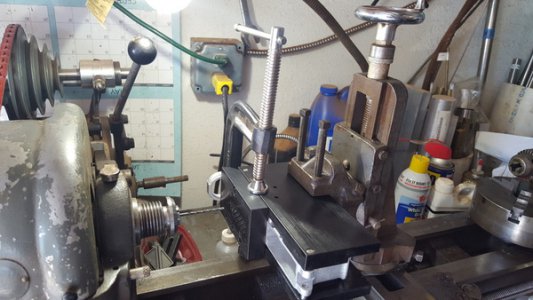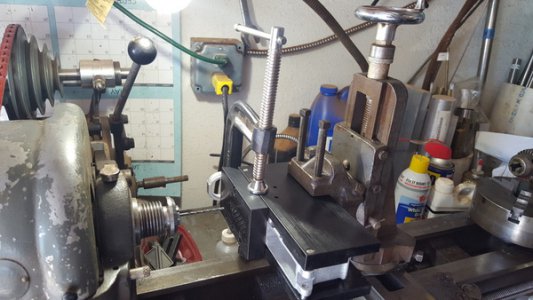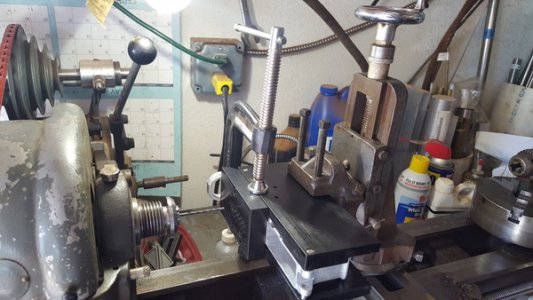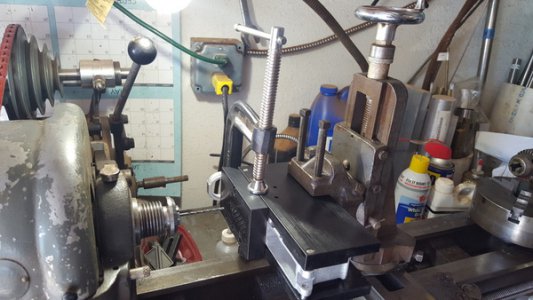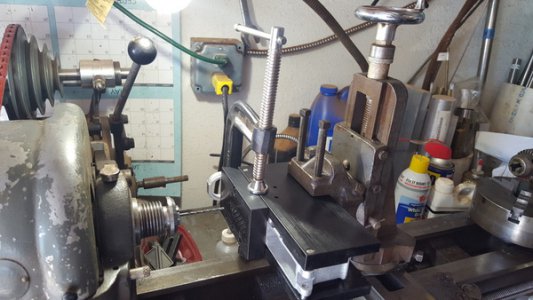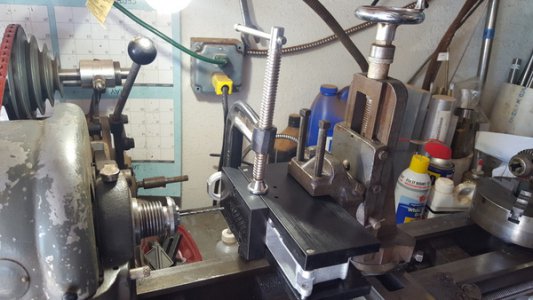- Joined
- Apr 12, 2013
- Messages
- 562
First off, I know I have a poor excuse for a mill. This is the milling attachment for my Atlas 10x36 lathe, and I'm trying to hog out a cavity in 7075-T6 Aluminum. I predrilled 5/16" holes to get some of the bulk out, and now I'm trying to go around with a (brand new) 3/8" ball end 4 flute carbide mill @ 685 RPM to hog out the web between drilled holes. I plunged about 1/2", locked the carriage to set depth, and started traversing. Chatter and vibration is horrible! Swarf is thin needle like slivers about 1/4 to 1/2" long, not really chips. I upped the RPM to about 800 and it mostly helped, but when the vibration hits it is worse.
I tried to lean on the workpiece to compensate for possible looseness in the leadscrew. No real help besides maybe the extra mass of my hand dampening the vibration a bit. Milling attachment and carriage are locked, so the only play is the cross slide.
RPM problem? Online calcs seem to lean towards CNC, recommending RPM's well in excess of my lathe's capability.
Fact of life with lathe milling attachments?
Cut depth?
??????
I tried to lean on the workpiece to compensate for possible looseness in the leadscrew. No real help besides maybe the extra mass of my hand dampening the vibration a bit. Milling attachment and carriage are locked, so the only play is the cross slide.
RPM problem? Online calcs seem to lean towards CNC, recommending RPM's well in excess of my lathe's capability.
Fact of life with lathe milling attachments?
Cut depth?
??????


